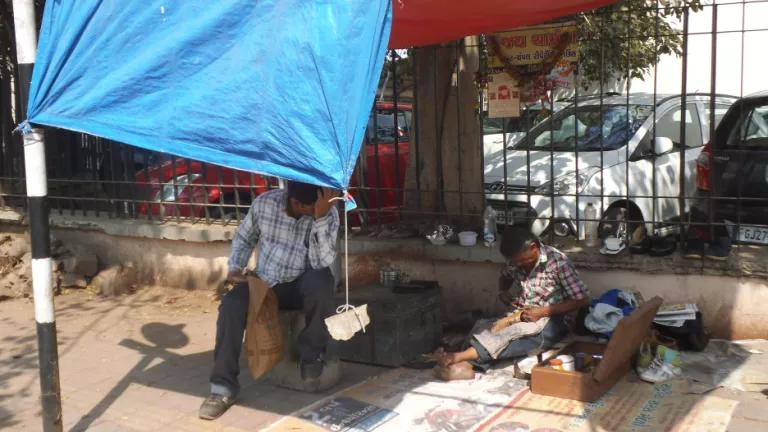Cooling with Less Warming in India
Read about the latest at the Montreal Protocol meetings this week and efforts toward climate friendly cooling in a warming world.
Countries from around the world continued to make progress this week, at the 33rd Meeting of the Parties to the Montreal Protocol—a critical treaty for driving climate action. The treaty has achieved much success in protecting the ozone layer and the climate, ensuring the work continued, slowed but not stalled even during the COVID-19 pandemic. The discussions focused on addressing the gaps in atmospheric monitoring of the controlled substances, energy efficiency and low GWP technologies, controlling unexpected emissions on CFC-11 and the most critical topic of replenishment of the Multilateral Fund. Earlier today, NRDC and experts from other civil society group got together to discuss opportunities for near term action on Kigali Amendment implementation in India.
After years of negotiations, countries came together under the Montreal Protocol in 2016 to solve another global environmental problem—the HFC gases used to replace ozone-harming chemicals. HFCs are potent greenhouse gases that would add 0.5 degrees to global warming by 2100 if left uncontrolled. India played a key role in negotiating the successful Kigali Amendment, which expands the Protocol’s mandate to phase down harmful HFCs. And last month, India cemented its support to the Amendment by formally ratifying the Kigali Amendment.
India’s ratification is a strong signal to industry and other nations that it is serious about phasing down HFCs. It is also a clear signal to the international community that India remains a critical global stakeholder in charting a low carbon future and is committed to climate-friendly cooling for all.
In India and in other countries, the work now really begins for domestic action. As part of its ratification, India announced plans to develop a national strategy for phasing down HFCs in close consultation with the industry, to be concluded by 2023. India will also update its existing legal framework to phase out ozone-depleting substances, which is going on now, to reflect the HFC phasedown by mid-2024. As the country bolsters its efforts to establish smart policies and bylaws, including energy efficiency while phasing down HFCs, the experts at the side event discussed the opportunities for near term HFC action in India.
Highlights from the Side Event
At the side-event, experts shared views on international support needed through the Montreal Protocol process to move HFC transitions in India and promote early action on low-GWP based solutions.
Experts at the side event included:
- David Doniger, Senior Strategic Director, Climate and Clean Energy, NRDC
- R R Rashmi, Distinguished Fellow, The Energy and Resources Institute (TERI)
- Alex Hillbrand, HFC Policy Advocate, Climate & Clean Energy and International Program, NRDC
- Shikha Bhasin, Senior Programme Lead, Council on Energy, Environment & Water (CEEW)
- Stephen O Andersen, Director of Research, Institute for Governance & Sustainable Development (IGSD)
RR Rashmi highlighted the connection to the climate talks in Glasgow next week. He said, it is a happy coincidence that we are talking on the two treaties back to back, and it is also a signal to the rest of the world that we need to move on climate action both under the Paris Agreement and Montreal Protocol, simultaneously. He discussed how cooling is captured in India’s climate pledge through the energy intensity target. Cooling is captured indirectly and is part of several ministries as part of the India Cooling Action Plan (ICAP). The ICAP prioritizes reducing cooling demand itself through expanding passive cooling and energy efficiency as well as reducing refrigerant demand. India’s ratification of the Kigali Amendment moves the transitions from the realm of the ideal to reality.

RR Rashmi speaking at the side event
David Doniger, NRDC, congratulated India on ratifying the Kigali Amendment. He also highlighted US domestic action on HFCs. His message was clear that sooner countries start transitioning, the easier and cheaper it will be. Stakeholders need to focus on jump starting action in India—from Multilateral Fund financing to various forms of co-financing for energy efficiency. Industry has a major role and can accelerate innovations and plans for the transition. He also highlighted it is now time to revive some of earlier US and India collaborations that were formed as run up to Kigali, as HFC transitions and sustainable cooling is high on agenda for both countries.
NRDC’s HFC expert, Alex Hillbrand highlighted the opportunities for near term HFC action in India, based on the findings of the recently completed analysis on Kigali Amendment implementation in India. He highlighted, that as an immediate next step, there is an opportunity to quickly begin inventory and surveying the HFC production, import and otherwise HFC using market. As this will support substantial foundation of better understanding on HFCs in the economy. It is something that has been done in the past with Ozone Depleting Substance and is happening on HFCs in some places. HFCs measured will enable India, to incorporate in its planning strategy. And as this is done, there is also an opportunity to do more and better atmospheric monitoring in India, locally. Within the sectors, space conditioning is one of the biggest opportunities in the country, it is therefore critical to find a low GWP solution and bringing it to scale and doing it with an energy efficient technology. The Global Cooling Prize had two winners, that used novel two refrigerants, it is important to have sustainable scalable models for these.
Shikha Bhasin, CEEW’s expert on cooling, discussed how the Kigali Amendment it is not only limited to HFCs, but also about sustainable cooling and this is where it converges with the ICAP. There are real opportunities from the technology transitions that are mandated by the Kigali Amendment. It will allow India to build its HVAC sector, build back better as an economic ideology and use it as an opportunity to create jobs, industrial growth, ensure that sustainability is the way, we make that happen.
Stephen Anderson emphasized as a starting point that India has always, been a global leader under the Montreal Protocol in CFC transitions with CFC-12. India is also one of the first innovators in room AC through R-290, as low GWP option. And India going forward has a lot to add and gain from the HFC transitions. It is also true that a head start is needed on HFC phase down and tap on the benefits early on. He discussed the importance of governments working with industry. Industry is critical to bringing in new technology and moving innovation forward. Leading companies in India and elsewhere would welcome working with government on advancing cooling solutions, they have done in the past and can do it in the future.
Prima Madan highlighted the global progress on ratification in India, the United States and China. These three countries have the leading share on HFC demand. Advancement in these economies is critical to sustainable cooling in the coming years.
As countries meet next week in Glasgow for one of the most important climate discussions of the year, the Montreal Protocol serves as a strong model for cooperation that saved the ozone layer and is working to save the climate too.




